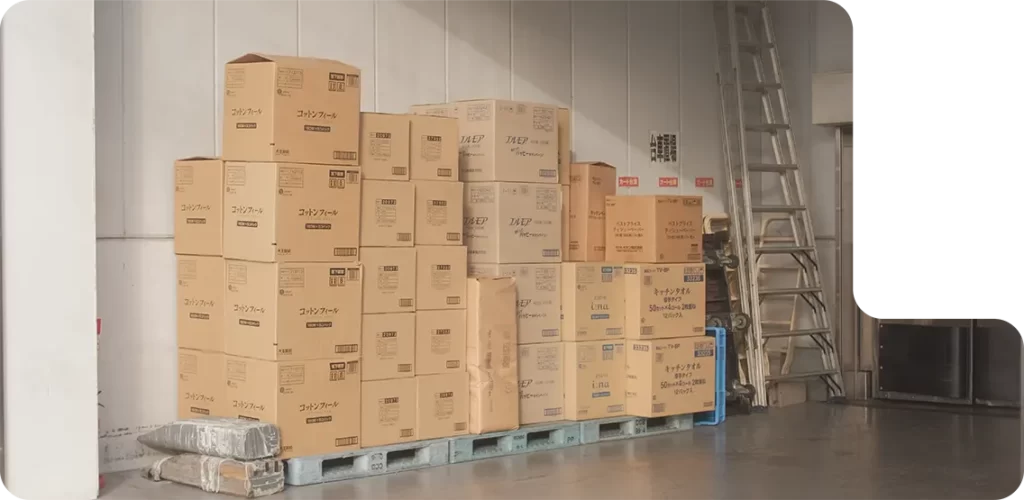Table of Contents
More Inventory Content
Get the latest e-commerce industry news, best practices, and product updates!
Table of Contents
More Inventory Content
Share This
Get the latest e-commerce industry news, best practices, and product updates!
Table of Contents
Share This
More Inventory Content
Get the latest e-commerce industry news, best practices, and product updates!

What Is An Inventory Write-Off?
One of the popular accounting terms is an inventory write-off. It is used to formally acknowledge a share of a company’s inventory that no longer bears value.
The inventory write-off can be logged in any of the two methods. It may be directly charged to the COGS account. Alternatively, it may counterbalance the inventory asset account with a contra asset account, typically regarded as the grant for inventory reserve or obsolete inventory.
Usually, write-offs need to be done when inventory turns out spoiled, damaged, obsolete, lost, or stolen. The causes of the loss can be deterioration, damage, damage in transportation, theft, fluctuations in market demands, misplacement, etc.

Understanding Inventory Write-Off
Inventory is a business’s asset to sell for profit or transform into commodities to sell for income. Generally accepted accounting principles (GAAP) state that any product that denotes a company’s future commercial value can be known by the term ‘asset’.
What is an inventory write-off? An inventory write-off process lowers the worth of a company’s inventory to denote that it has no value. The stock might become spoiled, defective, outdated, lost, or stolen in certain situations. Here, a company should write off corresponding inventory.

What Is An Inventory Write-Off?
Inventory is a business’s asset to sell for profit or transform into commodities to sell for income. Generally accepted accounting principles (GAAP) state that any product that denotes a company’s future commercial value can be known by the term ‘asset’.
What is an inventory write-off? An inventory write-off process lowers the worth of a company’s inventory to denote that it has no value. The stock might become spoiled, defective, outdated, lost, or stolen in certain situations. Here, a company should write off corresponding inventory.

Accounting For Inventory Write-Off
Writing off inventory includes eliminating the cost of no-value inventory pieces from accounting records. But when should stock be written off? It should be done when the product’s market price falls to a level lower than the cost at which it is presently recorded in accounting records or when it turns obsolete.
The accounting for inventory write-off is typically a discount in the inventory account, and the amount counterbalances with the cost of goods sold.
Direct Write-Off Method Vs. Allowance Method
Two standard methods of writing off inventory are discussed below:
Direct Write-Off Method
With the help of the direct write-off method, businesses record a debit to the expense account and a credit to the inventory asset account.
Let’s try to understand this method with an example. Suppose a company owns an inventory asset worth $50,000 and determines to write off $5,000 in inventory during the year’s end.
Firstly, the business will accredit the account using inventory write-off value to decrease the balance. So, the worth of the gross inventory would be dropped by: $50,000 – $5,000 = $45,000. Moreover, the value of the expense account of inventory write-off would be raised with debits to disclose the loss.
The income statement reveals the ‘expense account’. It reduces the business’s total income and its reserved earnings. The corresponding decrement in the reserved revenue converts into an equivalent decrement in the shareholders’ equity division in the balance sheet.
In case the inventory write-off proves to be unimportant, a business would frequently include the inventory write-off value in the COGS account. But the issue faced with incorporating this amount into the COGS account implies that it lowers the company’s gross margin. This is because no relevant revenue is registered for the product transaction.
The majority of inventory write-offs represent small, yearly expenses. If the inventory write-off is significant, like the one due to a warehouse barrage, it can be classified to be a non-persistent loss.
Allowance Method
This method is more suitable when inventory could be judiciously appraised to represent extinct value; however, the inventory is still not settled. With the help of this method, businesses will report a journal entry along with accreditation to the ‘contra asset account’ (like the grant for outdated inventory or inventory reserve). Furthermore, compensating debit would be done inside the expense account.
Whenever the property is settled, the inventory reserve account will be deducted, after which the inventory account will be accredited. Consequently, it helps maintain the preliminary cost in the preliminary inventory account.

Inventory Write-Off Vs. Write-Down
Inventory must be written down rather than written off if it only decreases in value but doesn’t lose completely. If the stock still has a reasonable market value, but this value is found lower than the corresponding book value, then it should be written down rather than written off.
If the inventory’s market price falls under its cost, a company will write down or decrease the inventory’s reported value to the market value per the accounting rule. This value reflects in the financial statement.
The value of inventory write-down is the difference between two amounts. They are the cash amount the business can acquire by optimally settling the inventory and the book value of that inventory.
Generally, inventory write-downs and inventory write-offs are reported identically. However, the inventory write-down expense account is debited, not the inventory write-off expense account.
Note that an inventory write-off or write-down must be recorded at the current time. The reduction or loss in the value can’t be expanded and acknowledged across multiple periods. This implies that there is a future benefit linked with that inventory.

How To Write-Off Inventory?
If there is a loss in the inventory value, there is a significant influence on the income statement and the business’s balance sheet. The inventory amount that needs to be written off represents the inventory’s cost and the cash amount which can be attained by either selling off or optimally settling the stock.
It happens that certain inventory items haven’t been identified. In such cases, businesses can establish a reserve for inventory write-offs. If you want to write off inventory, it is mandatory to credit the inventory account and register a debit to the corresponding stock.
The following example lets you thoroughly understand how to write off inventory:
Suppose your company decides to write off inventory worth $10,000 from a stock worth $70,000, which is retained at the end of the year. Firstly, you should credit the inventory account with the amount to write off to decrease the balance.
So, the inventory value to write off is:
$70,000 – $10,000 = $60,000.
The next step is to credit the inventory shrinkage expense account in the income statement to reveal the inventory loss. Irrespective of the case, the expense item is an operating expense.
Here are a few noteworthy points to consider when you write off inventory:
- A drop in the net income of the business and its reserved earnings
- The decrease in reserved revenues reduces the shareholders’ equity and is reflected in the balance sheet.
- If the inventory write-off is insignificant, it will be charged to the cost of goods sold. But it damages the gross margin of the business because there is no equivalent revenue registered for the trade of that product.

5 Steps To Write Off Inventory
Following the steps below can avoid confusion on how to write off inventory.
Step 1: Evaluate value loss
In the first step, you must check if the inventory possesses any residual market value. If yes, then it can be considered as a write-down. But if all value was lost, move on with the inventory write-off procedure.
Step 2: Know the extent of the loss
If a company considers an inventory write-off unimportant, it will be registered in COGS. But if it is significant, it will be recorded as a distinct entry. Once recorded, it will facilitate tracking and prevent damage to gross margins.
Step 3: Prepare a journal entry
This step involves preparing inventory write-off journal entries, which is one of the most important. Based on the significance of the loss evaluated in the above section, a business will do one of two tasks. The choices are debiting the COGS and crediting inventory or debiting the loss on a separate inventory write-off account and then credit inventory.
Per GAAP, inventory can’t be written off at a forthcoming date or extended over several periods. Therefore, this step should be taken instantaneously. This step implies that the complete write-off should be identified and recorded as an expense. , Inventory management software helps accurately write off lost goods and maintain GAAP compliance.
Step 4: Find out the best method of disposal
Businesses don’t have to part with the written-off inventory. However, it’s significant to obey IRS methods of disposal.
Step 5: Document disposal
Whether a company cashes out, donates, or damages its written-off inventory, it must guarantee suitable documentation. For example, documentation like pictures, receipts, etc., conveys proof to the IRS, if required.

When Should Inventory Be Written Off?
When calculating gross profit or loss, it is inevitable to have the precise value of inventory. Therefore, businesses must maintain bookkeeping for inventory write-offs whenever the inventory value changes considerably.
The following reasons justify when the inventory is written off:
Inventory gets stolen
In certain situations, it happens that inventory disappears. It might get stolen earlier within the supply chain before reaching customers, through burglars, or even employees. You can consider theft as the cause if the inventory counts don’t equate with inventory on hand.
Inventory was consumable
Those businesses dealing with drinks, foods, or consumable items will have to write off inventory in some instances. Ts can avoid over-purchasing and properly cycle through dates to avoid writing off inventory. However, any products approaching their expiration date must be written off.
Inventory gets damaged at any phase of the supply chain
An inventory would be able to upkeep its value if it arrives in a proper condition suitable for sale. However, this doesn’t happen every time.
Due to several reasons, the supply chain can malfunction, leading to product damage. As a result, those products are unsellable to customers. The supplier must compensate the company, but you need to write off the damaged inventory.
Inventory is no longer significant to the market
Market demand fluctuates quickly. For example, a product for which you were a prominent seller for a year may become obsolete now in the market. So, an obsolete inventory write-off comes into the picture, implying that you must write off obsolete inventory.
Other reasons:
- Inventory like flowers and fruits might be damaged due to their brief shelf life.
- Damage to products because of insufficient storage and handling.
- Items like technology products owing high market value can go obsolete after a few months.

How To Write Off Damaged Inventory?
Step 1: Prepare a report for every damaged inventory item
The sub-steps involved are
- Firstly, you must inspect the stock when it ships to your warehouse. Reviewing it helps you to recognize goods that may have been damaged.
- Place the damaged goods in a designated area.
- Create a damage report for all the damaged inventory items.
- Calculate the price of the spoiled inventory at the end of the particular accounting period to write off the loss.
Note: The price of the damaged stock is considered at fair market value (the current purchase price for those inventory items). This value might be lower than the purchase price.

Step 2: Establish an inventory write-off expense account
You must set up this account to register the damaged inventory’s value. Whenever you mark an entry in that inventory write-off expense account, decrease the amount of stock approved on the books.
Step 3: Debit and credit tasks
In this step, you must debit the COGS (cost of goods sold) account and then credit the inventory write-off expense account. Not all inventory is damaged regularly. In such situations, you can decide to debit the COGS account and credit the inventory account to dismiss the loss.

How does A Write-Off Affect The Income Statement?
If your company writes off small inventory amounts, it doesn’t need a specific disclosure over the income statement. As an alternative, the loss is encompassed along with the COGS amount.
But if your company writes off vast amounts of inventory, it should be revealed on the income statement. Along with other inventory accounts, an inventory write-off expense account is incorporated. Every time the stock is written off, this account should reflect the loss on the income statement.
Note that loss or decrement in inventory value can’t be extended and acknowledged across multiple periods. The reason is this will denote certain future benefits associated with that inventory item. Hence, you must recognize inventory write-offs right away.

Management Of Written-Off Inventory
The inventory write-off process doesn’t mean that your company must expel the inventory instantly. Essentially, this process implies that the company holds on to the stock hoping its value will increase in the future.
It is also recommended to hold the inventory momentarily while the purchasing team is busy assessing the highest price to settle it. But keep in mind that those inventory items which have been written off must not be held too long. It can be reserved for a long time if your company logs an additional investment in its inventory storage or an untidy warehouse area disturbing the usual warehousing activities.
Conclusion
Small and large-scale companies that upkeep their inventory on hand have to write off stock for no-value inventory pieces. The two most significant benefits of inventory write-off are it assures accounting accuracy and decreases the tax charge for business holders.
The inventory write-off process includes its value to COGS or counterbalancing the old inventory allowance in the journal entry. Although most businesses carry out an inventory write-off during the year-end, if there is a vast inventory, you must record the noteworthy changes once each month.
Sign up today and leave the logistics to us
Sign up and we will get back to you within 24 hours to discuss what services would be best for your business needs. Or speak with us now and tell us what you need.
FAQs
Any company can write off certain items in the inventory if it considers that they do not bear any value in the business or market. In that case, the company must prepare the journal entry for inventory write-off to discard the written-off items from its balance sheet.
This entry can be recorded by deducting the loss on the inventory write-off account and then crediting the inventory account.
There are certain similarities between the two terms. One big difference found when comparing the inventory write-down vs. write-off is that both differ in the amount of loss.
When an inventory attempts to reduce its worth and doesn’t lead to a loss of its total value, then it is called an inventory write-down. In inventory write-down, the inventory is still powerful enough to be sold, but not at the original price.
Inventory write-off must be considered if the item loses its worth and is damaged, too.
Inventory write-down decreases the value of certain items for tax and accounting purposes and leaves some value to the asset. Inventory write-off entirely reduces the value to zero.
Yes, an inventory write-down is regarded as an expense that decreases the net income in a specific financial year. Unlike depreciation which is recorded multiple times, inventory write-down is recorded once. Moreover, this process reduces the equity of the owner. It also influences the inventory revenue for succeeding periods.
Inventory write-down must be considered an expense in cases like items damaged in production, damaged during shipment, and stolen products.
GAAP states to consider obsolete inventory write-off when the inventory is found outdated or no longer needed. You must deduct a COGS account and credit inventory directly or in your inventory reserve account if it’s obsolete.
For old inventory write-off, the amount you need to write down is the variance between the cost of the inventory and cash worth that business can acquire by optimally settling off that inventory.
If a company closes and aims to write off inventory, the following steps can be implemented:
Step 1: Check which inventory can’t be sold, and the record is as write-off inventory. The corresponding value of the inventory is used to debit the inventory account along with an offset to the COGS account.
Step 2: Cancel business credit cards and close the business bank accounts. (This step guarantees that you will no longer see charges in the account and begin afresh with your new business endeavor.)
Step 3: You can write off any unsellable inventory by contributing it to a charity. Give it to those charity organizations that accept tax-deductible donations, so you receive the write-off.
Prepare a journal entry that lets you write off the suitable amount of the asset. The same will be credited to the asset account. For the debit portion of the record, two choices are available. It can be debited to an expense account (if no reserve is recorded against the asset till now) or debited alongside an account previously set up to counterbalance the asset.
If the net book value becomes zero, the journal entry of the fixed asset write-off shows ‘1,’ i.e., the price of the fixed asset is equal to its accrued depreciation.